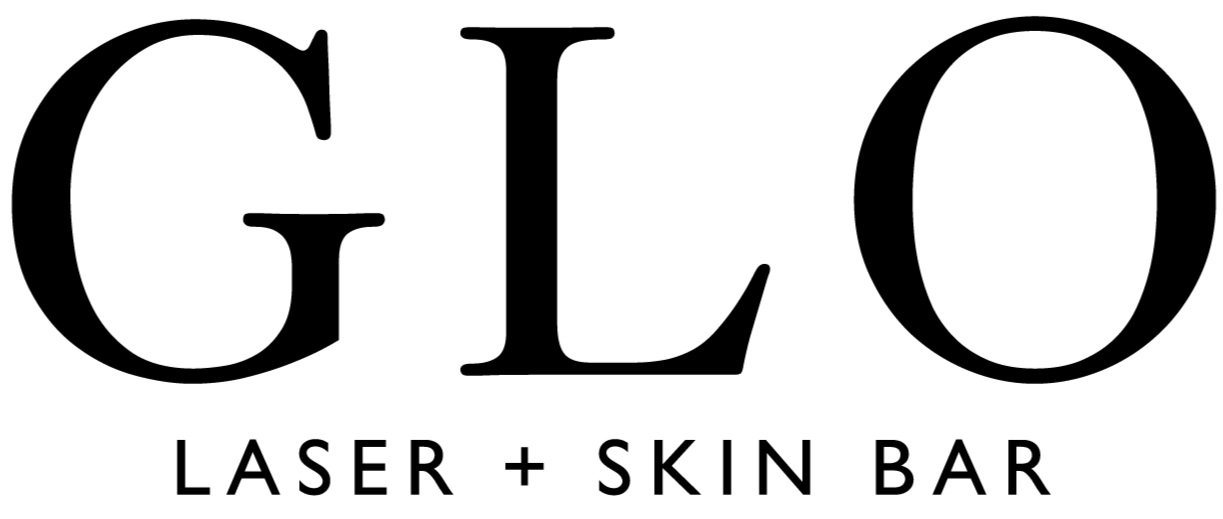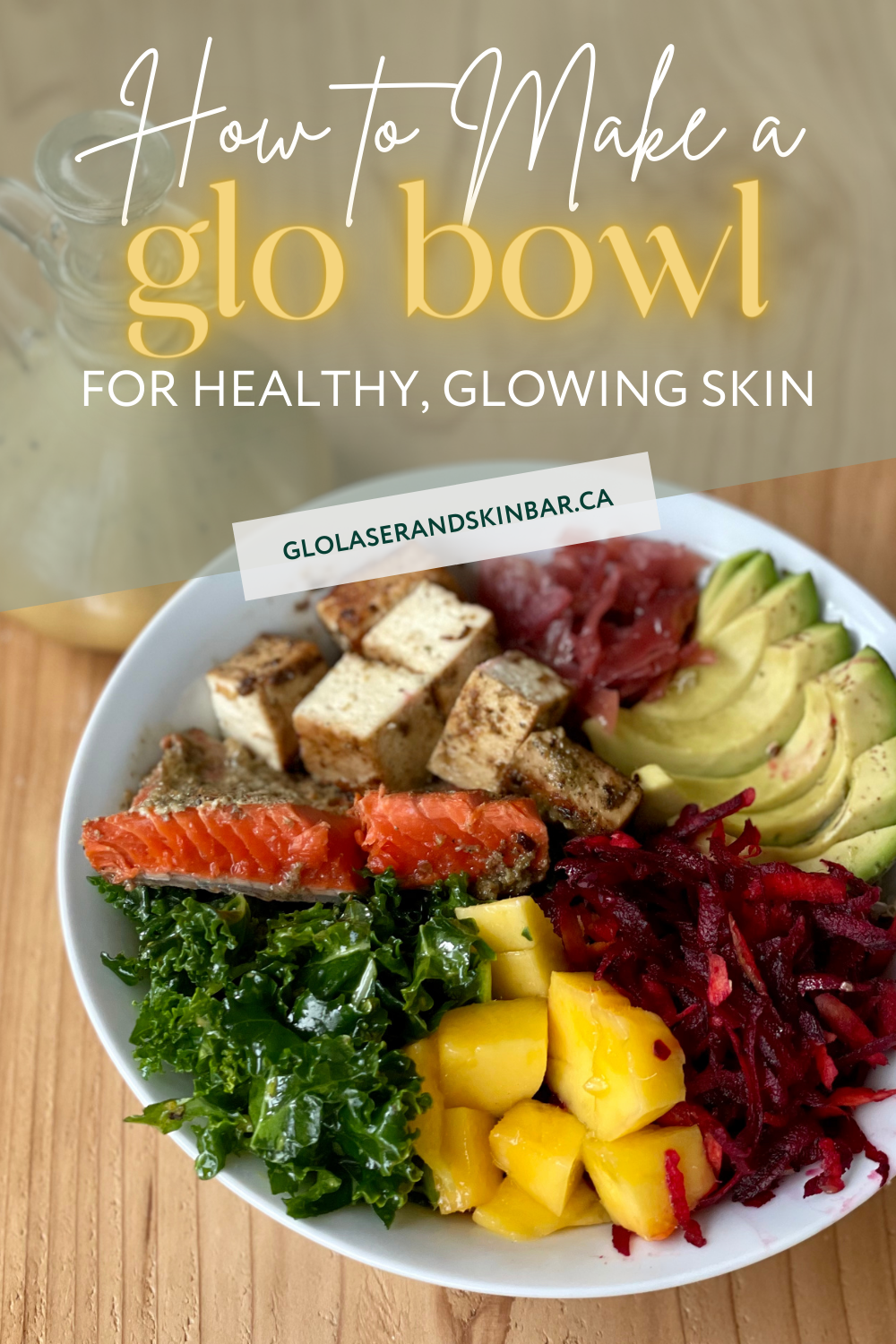How to Make a Glo Bowl for Healthy, Glowing Skin
I’ve said it before, and I’ll say it again: Glowing skin starts from within!
Unfortunately, aging is unavoidable, but there are many things that we can do to slow down the skin’s aging process: decrease stress, proper sun protection, exercise, eat a low-calorie diet, and eat a nutrient-dense diet.
Prevention is the best thing you can do to prevent signs of aging, but in reality, we’re not perfect!
Stress, sun exposure, over-indulging, and junk food…it happens to all of us!
I wouldn’t be in business if you didn’t need assistance reversing your “bad choices” ;)
But aside from offering an array of incredible skincare treatments, I can share how to make a delicious meal that nourishes your skin from the inside out.
Studies have shown that incorporating a variety of vitamins, fatty acids, probiotics and proteins in your diet is essential for promoting skin health. So because of this, I’ve found a way to incorporate them ALL into a meal in the most delicious way - a little something I’m calling the Glo Bowl.
How to Make a Glo Bowl For Healthy, Glowing Skin
The Glo Bowl isn’t a recipe, per se. It’s more of a “How-To.”
That is, “how to incorporate skin-beneficial ingredients into a single meal that actually tastes good.”
Before I get into the assembly of the Glo Bowl, it helps to know why you want to include these ingredients. If you’re not into that kind of thing, keep scrolling.
The best ingredients for healthy, glowing skin…
1. Vitamin C: required for collagen synthesis.
Sources: Fruits and vegetables such as citrus fruits and guava, Blackcurrant, rosehips, chilli pepper, and parsley.
2. Vitamin E: kills free radicals (the bad guys that damage cells and cause aging)
Sources: Oils such as wheat germ, sunflower, safflower, corn and soy (non-GMO, preferably)
3. Vitamin A: to protect against the damage caused by sunlight (source).
Sources: Carrots, pumpkin, yam, sweet potato, mango, papaya.
4. Polyphenols: powerful anti-oxidants
Sources: Fruits and plant-derived beverages such as fruit juices, tea, coffee and red wine, dark, leafy greens, cereals, dark chocolate, mushrooms, legumes.
5. Probiotics: Beneficial bacteria that fight off harmful bacteria.
Sources: yogurt, kefir, sauerkraut, kimchi, miso, kombucha, raw cheese, apple cider vinegar, nutritional yeast.
6. Prebiotics: dietary fibres that feed probiotics.,
Sources: Legumes, beans and peas, oats, bananas, berries, asparagus, dark leafy greens, garlic, quinoa
7. Omega-3 Fatty Acids: Essential for synthesizing tissue lipids and cellular renewal.
Sources: shellfish, flaxseed oil, hemp oil, sunflower oil, seeds, walnuts, leafy greens, avocado, fatty fish (salmon, tuna sardines).
8. CoQ10: a powerful antioxidant found in the surface layer of the skin and acts as a barrier to free radicals.
Sources: Oily fish (salmon, tuna, sardines), organ meat, whole grains.
The key to making the ultimate Glo Bowl is incorporating food from each of the eight categories!
Glo Bowl Assembly
It’s really this simple:
Start with about a cup of cooked whole grains (millet, quinoa, brown rice etc.) to layer on the bottom of the bowl, then add your favourite salad ingredients!
This will depend on personal taste and what you have on hand.
If you’re not super creative in the culinary department, just copy mine! It includes:
Cooked quinoa, about 3/4 cup (CoQ10, prebiotics)
Kale salad, which I usually have pre-mixed in my fridge with an olive oil dressing (olive oil, garlic, lemon juice, nutritional yeast, salt and pepper) (Vitamin E, Prebiotics, Probiotics)
Purple Sauerkraut (Probiotics, Prebiotics)
Mango (Vitamin A)
Avocado (Omega Fatty Acids)
Grated Beets and Carrots (another thing I have pre-grated in my fridge because it makes it easy to add to salads and wraps quickly) (Vitamin C)
Wild Salmon and Tofu (I marinated them in a Korean BBQ sauce overnight) (CoQ10, Omega Fatty Acids)
Some more Glo Bowl Options
Cooked yam or squash
Dried cranberries
Tuna
Roasted or raw red peppers
Toasted nuts & seeds
Kimchi
Spinach, arugula, swiss chard
Pickled beets
Shredded cabbage
Cucumber
Pickled red onion
Sprouts
And, of course, the dressing!
A great dressing can make a salad, and this Miso Orange Vinaigrette will not disappoint. It’s delicious and contains Vitamin C, Vitamin E, Probiotics, and Polyphenols and Omega Fatty Acids. It works great as a dipping sauce or marinade, too!
Orange Miso Vinaigrette
- ¼ cup Orange Juice, fresh
- 2 tbsp Apple Cider Vinegar
- 2 tsp Miso
- 1 tbsp Maple Syrup or Honey
- 1 clove Garlic
- 1 tsp Ginger
- 1 tbsp Tamari or Soy Sauce
- ¼ cup Sunflower O
- 2 tsp Sesame Seeds
Blend all ingredients, except the sesame seeds, in a blender or Magic Bullet (or whatever you use to blend).
Stir or whisk in sesame seeds.
Keep refrigerated - will stay fresh for about a week.
Make up several of these at once if you have an upcoming busy schedule!
Let me know in the comments what your favourite Glo Bowl Ingredients are!
A quick biology terminology refresh:
Antioxidants: an enzyme or other organic substance capable of counteracting the damaging effects of oxidation in tissue.
Free-Radicals: an unstable molecule that can damage healthy molecules, resulting in aging. Essentially, the more free-radicals, the faster the aging process.
Epidermis: the outer, nonvascular, nonsensitive layer of the skin covering the skin.

